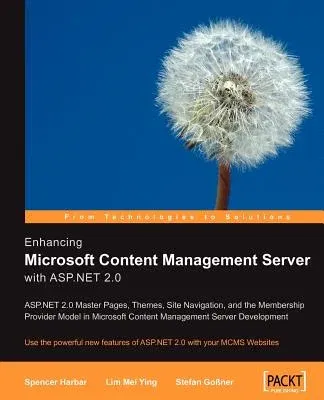The release of Microsoft Content Management Server (MCMS) Service Pack 2
opens up the world of ASP.NET 2.0 to MCMS developers. Written by the
masters of MCMS, this book shows you how to use the new features of
ASP.NET 2.0 that everyone is talking about in your MCMS development. You
will first learn how to install and configure MCMS SP2. There are two
approaches to setting up a development environment for SP2: an upgrade
from a previous SP1a installation or starting from scratch and building
a fresh installation including SP2. Of course, both approaches are
covered. You will become familiar with the MCMS Service Pack 2
development environment, and create custom Visual Studio 2005 templates
to overcome some of the issues which are present with the templates
shipped with MCMS SP2. After that, its time to look at some of the most
exciting features of ASP.NET 2.0, and how you can make use of them in
MCMS: master pages, site navigation, themes, and the membership provider
model. One of the coolest features introduced with ASP.NET 2.0 is master
pages, which allow developers to enforce common layout and behaviour
across pages within an application. You will learn about the benefits of
using master pages and see a step-by-step guide for implementing them in
your MCMS applications, where they become master templates! ASP.NET 2.0
introduces a whole new way of implementing site navigation, driven by
site maps. By programmatically adding channels and postings to a site
map you will see how to smoothly integrate these controls to any MCMS
site. To customize the look of your site, we will see how a common look
and feel can be applied efficiently to a MCMS site by using ASP.NET 2.0
themes. An essential customization required for themes to work correctly
in an MCMS site is a must-read feature of this chapter. MCMS has its own
role based authorization and user management system which cannot be
extended. However, the new ASP.NET 2.0 Membership Provider Model and the
shipped controls can be used within MCMS applications to improve the
implementation of Forms Authentication and provide a more elegant
solution for authenticating against an external store. A collection of
tips and tricks round off the book, including using the Provider Model
design pattern to ease migration to Office SharePoint Portal Server.


